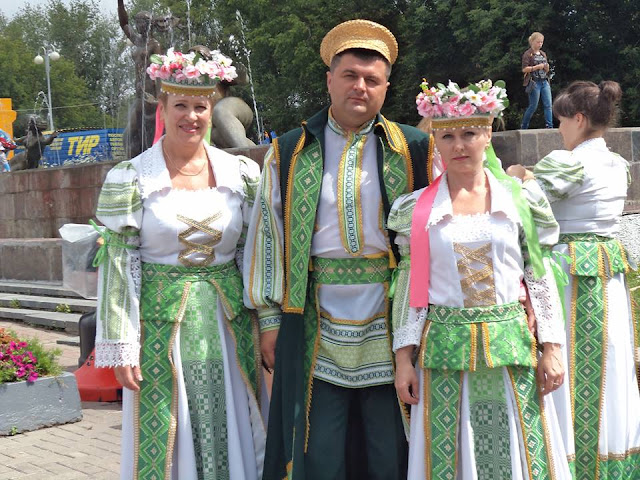Tuesday, 30 July 2013
Comprender el "NO" de los niños....1 parte To understand "not" of the children 1st report
Las pataletas y los llantos, son expresiones que los adultos suelen tratar de silenciar. La agresividad, sin embargo, es un instinto que sirve para autoafirmarse y reivindicar lo que se necesita. Escuchar ese reclamo con amor, ayuda a los niños a desarrollarse.
 Como mamiferos que somos, y en tanto no haya lesiones extructurales, el instinto se manifiesta desde el principio de la vida en forma de gestos, sonidos y expresiones corporales. El recién nacido exterioriza lo que necesita de una forma firme, segura, sin ambivalencias. Es su manera de comunicarse con el mundo. Si las personas adultas, especialmente quien ejerce la función materna, tienen la capacidad de relacionarse a través de ese código, se establece un dialogo profundo y permanente desde el afecto, la empatia y la visceralidad, que definimos, como vinculo afectivo.
Como mamiferos que somos, y en tanto no haya lesiones extructurales, el instinto se manifiesta desde el principio de la vida en forma de gestos, sonidos y expresiones corporales. El recién nacido exterioriza lo que necesita de una forma firme, segura, sin ambivalencias. Es su manera de comunicarse con el mundo. Si las personas adultas, especialmente quien ejerce la función materna, tienen la capacidad de relacionarse a través de ese código, se establece un dialogo profundo y permanente desde el afecto, la empatia y la visceralidad, que definimos, como vinculo afectivo.
Una de las manifestaciones que paradojicamente forman parte de ese código primitivo es la negación. A través de ella, el niño, se va reconociendo como ser individual, va reduciendo su dependencia casi total del cuerpo materno para sentirse ser propio.
Hay señales que evidencian que se esta produciendo una evolución del "yo" del recién nacido, y por lo tanto, de su proceso madurativo: la primera y más primitiva, ya que se manifiesta durante los primeros meses, es la sonrisa, la segunda el llanto y las señales de angustia ante un extraño, y la tercera es la negación con la cabeza, comenzando con el periodo en que empieza a andar, lo cual le permite separarse por propia voluntad gateando y caminando.
Conforme van pasando los meses, lo instintivo, se va articulando con lo racional y da paso al lenguaje, estableciendose progresivamene la forma de relacionarse propia del ser humano. Así, el gesto de la negación se une a la palabra y refuerza su significado. Decir "no", es por consiguiente una expresión arraigada en nuestro cuerpo, discurso dialogante, reflejo de la autoestima y autorreconocimiento..
Suena un tanto extraño escuchar que a través de la negación nos afirmamos. De hecho, decir "no" traduce una aptitud que suele asociarse a la rebeldía y la agresividad, un tema abordado a veces por los grupos de padres y madres, o en otros espacios preventivos, cuando surgen cuestiones relacionadas con al forma de gestionar la belicosidad de sus hijos.
Conceptos como autoridad, autoritarismo, norma, castigo, premio, pacto, límite, agresividad, rabia, violencia o frustración están en boca tanto de padres y madres como de los profesionales de la educación, y son causa de discusión, discordia y conflicto permanente.
 Generalmente, se piensa que las expresiones agresivas, que se manifiestan inicialmente a traves del llanto continuado, -que puede llegar a ser irritante-, y que con el tiempo se sustituyen por la negación y la rabieta, son negativas y deben evitarse. Por este motivo se "enseña" a reprimirlas y sustituirlas por actitudes civilizadas. Muy posiblemente esta aptitud, esté basada en los prejuicios culturales.
Generalmente, se piensa que las expresiones agresivas, que se manifiestan inicialmente a traves del llanto continuado, -que puede llegar a ser irritante-, y que con el tiempo se sustituyen por la negación y la rabieta, son negativas y deben evitarse. Por este motivo se "enseña" a reprimirlas y sustituirlas por actitudes civilizadas. Muy posiblemente esta aptitud, esté basada en los prejuicios culturales.
The tantrums and the crying, there are expressions that the adults usually try to silence. The aggressiveness, nevertheless, is an instinct that serves for autoafirmarse and to claim what is needed. To listen to this claim with love, helps the children to develop.
As mammals that we are, and meanwhile there are no injuries extructurales, the instinct is evident from the beginning of the life in the shape of gestures, sounds and corporal expressions. The newborn baby expresses what he needs from a firm, sure form, without ambivalence. It is its way of communicating with the world. If the adult persons, especially the one who exercises the maternal function, have the aptitude to be related across this code, a deep and permanent dialogue is established from the affection, the empathy and the visceralidad, which we define, as affective tie.
 One of the declarations that paradoxically are part of this primitive code is the denial. Across her, the child, there is admitted how to be an individual, is reducing its almost entire dependence on the maternal body to be sorry to be proper.
One of the declarations that paradoxically are part of this primitive code is the denial. Across her, the child, there is admitted how to be an individual, is reducing its almost entire dependence on the maternal body to be sorry to be proper.
There are signs that they demonstrate that an evolution is taking place of "me" of the newborn baby, and therefore, of its process madurativo: the first one and more primitive, since it is evident during the first months, the smile, the second is the crying and the signs of anxiety before a stranger, and the third one is the denial with the head, beginning with the period in which it begins walking, which allows him to separate for proper will crawling and walking.
The same way as they are spending the months, the instinctive thing, it is articulated by the rational thing and passes to the language, there being established progresivamene the way of being related proper of the human being. This way, the gesture of the denial joins the word and reinforces its meaning. To say "not", is consequently an expression established in our body, dialogante speech, reflex of the self-esteem and autorreconocimiento.
It sounds somewhat strangely to listen that across the denial we steady ourselves. In fact, to say does not translate an aptitude that usually collaborates to the rebelliousness and the aggressiveness, a topic tackled sometimes by the groups of parents and mothers, or in other preventive spaces, when questions arise related with to the way of managing the bellicosity of its children.
Concepts like authority, authoritarianism, norm, punishment, award, agreement, limit, aggressiveness, anger, violence or frustration are in mouth both of parents and mothers and of the professionals of the education, and are a cause of discussion, discord and permanent conflict.
 Generally, it is thought that the aggressive expressions, which are evident initially across the continued crying, - which can become an irritant - and which with the time replace for the denial and the tantrum, be negative and must avoid. For this motive one "teaches" to suppress them and to replace them with civilized attitudes. Very possibly this aptitude, be based on the cultural prejudices.
Generally, it is thought that the aggressive expressions, which are evident initially across the continued crying, - which can become an irritant - and which with the time replace for the denial and the tantrum, be negative and must avoid. For this motive one "teaches" to suppress them and to replace them with civilized attitudes. Very possibly this aptitude, be based on the cultural prejudices.La Doble Conciencia....The double conscience
EL SER HUMANO VIVE DOS REALIDADES EN SU VIDA: LA EMOCIONAL Y LA RACIONAL, QUE INCLUYEN DOS MODOS DE PERCIBIR Y DE PENSAR, DOS MODOS DE CONCIENCIA.
THE HUMAN BEING LIVES THROUGH TWO REALITIES IN ITS LIFE: THE EMOTIONAL ONE AND THE RATIONAL ONE, WHICH THERE INCLUDE TWO WAYS OF PERCEIVING AND OF THINKING, TWO WAYS OF CONSCIENCE.
ЧЕЛОВЕК ПЕРЕЖИВАЕТ ДВА ТИПА РЕАЛЬНОСТИ В ЕГО ЖИЗНИ: ЭМОЦИОНАЛЬНАЯ И РАЦИОНАЛЬНАЯ, КОТОРУЮ ВКЛЮЧАЮТ ДВА СПОСОБА ВОСПРИНИМАТЬ И ДУМАТЬ, ДВА СПОСОБА СОЗНАНИЯ.
Sunday, 28 July 2013
Saturday, 27 July 2013
Friday, 26 July 2013
Pequeña reflexión.......Kidling Reflexión
TODA OBRA DE ARTE ES HIJA DE SU TIEMPO, Y MUCHAS VECES ES MADRE DE NUESTROS SENTIMIENTOS.
ANY WORK OF ART IS A DAUGHTER OF ITS TIME, AND OFTEN MOTHER OF OUR FEELINGS.
КАЖДОЕ ПРОИЗВЕДЕНИЕ ИСКУССТВА - ДОЧЬ ЕГО ВРЕМЕНИ, И ЧАСТО МАТЬ НАШИХ ЧУВСТВ.
Wednesday, 24 July 2013
Cambiando nuestro cerebro 3º parte.....Changing our brain 3º report
Dirigir "nuestra atención" es crucial para potenciar la capacidad plástica, sin olvidar, además que la intensidad emocional de la experiencia atencional influye en el proceso. Es un mecanismo orgánico en el que participa nuestro creador dinámico, el hipocampo, que cuenta con una capacidad plástica y que está relacionado con el aprendizaje, con la capacidad para crear nuevas neuronas y don diferentes tipos de memoria:
La memoria declarativa -hechos acontecimientos, palabras y su significado-, la memoria de trabajo, junto con nuestra corteza prefrontal, -la información que mantenemos en mente el tiempo suficiente para realizar acciones encadenadas- la memoria de relación-, que se forma cuando se almacenan acontecimientos relacionados entre sí que suceden en un momento determinado- y la memoria espacial- que crea un mapa espacial del entorno-.
Por otro lado, existen evidencias, aportadas por estudios realizados con neuroimagenes, de que el hipocampo humano se activa no solo en situaciones de navegación real, sino también de navegación virtual o imaginaria.
Existe una correlación directa entre ejercicio y aumento de BDNF, (Factor Neurotrofico), con la capacidad de aprender a corto plazo, y del incremento de la dopamina y adrenalina, dos neurotransmisores, con la mejora del aprendizaje a medio y largo plazo. Estos resultados se hallan en niños, adolescentes ya adultos.
 To direct "our attention" is crucial to promote the plastic capacity, without forgetting, as well as the emotional intensity of the experience atencional influences the process. It is an organic mechanism in which there takes part our dynamic creator, the sea horse, which is provided with a plastic capacity and which is related to learning, with the aptitude to create new neurons and gift different types of memory:
To direct "our attention" is crucial to promote the plastic capacity, without forgetting, as well as the emotional intensity of the experience atencional influences the process. It is an organic mechanism in which there takes part our dynamic creator, the sea horse, which is provided with a plastic capacity and which is related to learning, with the aptitude to create new neurons and gift different types of memory:
The declarative memory - made events, words and its meaning - the work memory, together with our prefrontal crust, - the information that we maintain in mind the sufficient time to realize linked actions - the memory of relation - which forms when there are stored events related between themselves that happen in a certain moment - and the spatial memory - that it creates a spatial map of the environment-.
On the other hand, evidences contributed by studies exist realized with neuroimagenes, of that the human sea horse is activated not only in situations of real navigation, but also of virtual or imaginary navigation.
A direct interrelation exists between exercise and increase of BDNF, (Factor Neurotrofico), with the aptitude to learn in the short term, and of the increase of the dopamina and adrenaline, two neurotransmitters, with the progress of learning to way and long term. These results are in children, already adult adolescents.
Subscribe to:
Comments (Atom)
-
En el Antiguo Testamento se evidencian dos tipos de observancia religiosa, y el tipo enfatizado por los cristianos de hoy a menudo determin...
-
Animismo El animismo es la creencia en los seres espirituales. El animismo es la doctrina que defiende que todos los objetos en...
-
El instrumento más viejo (el más antiguo, ya que el "kantele" mencionado en el "Kalevala" le debe su origen), es la g...



















































